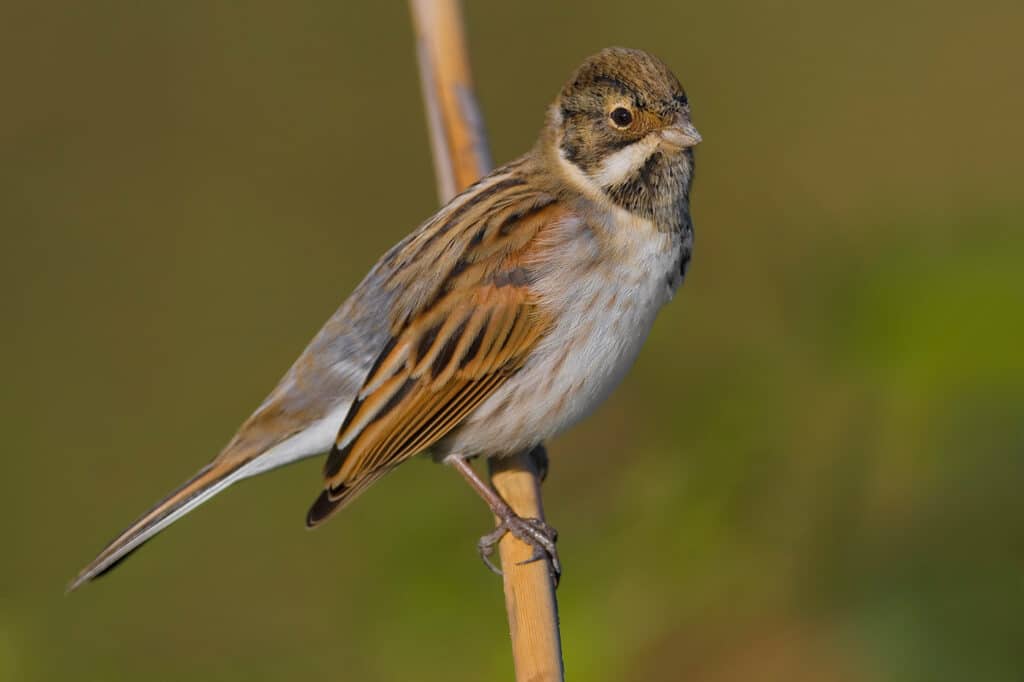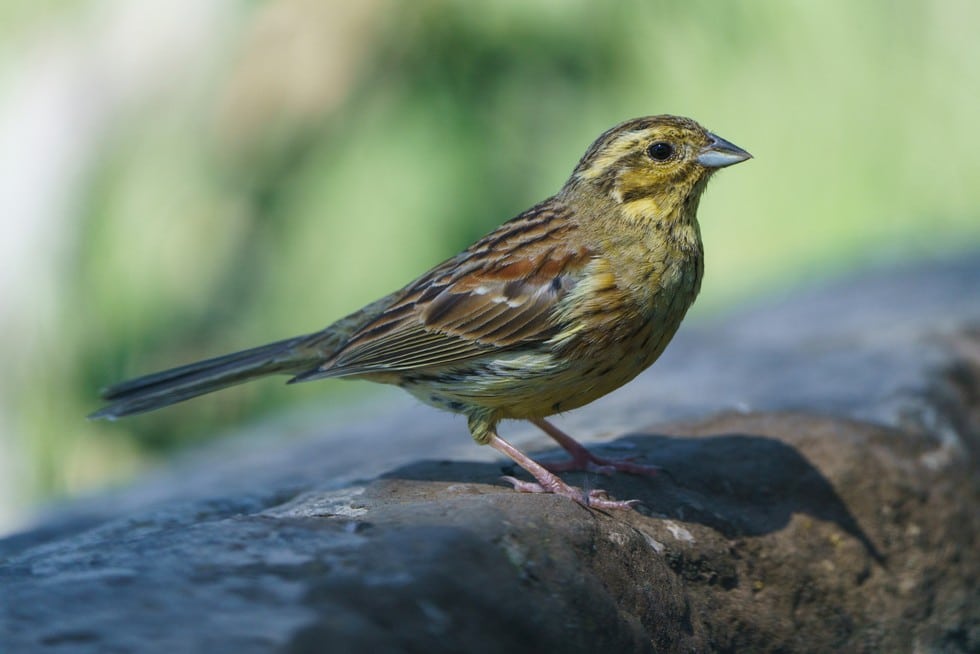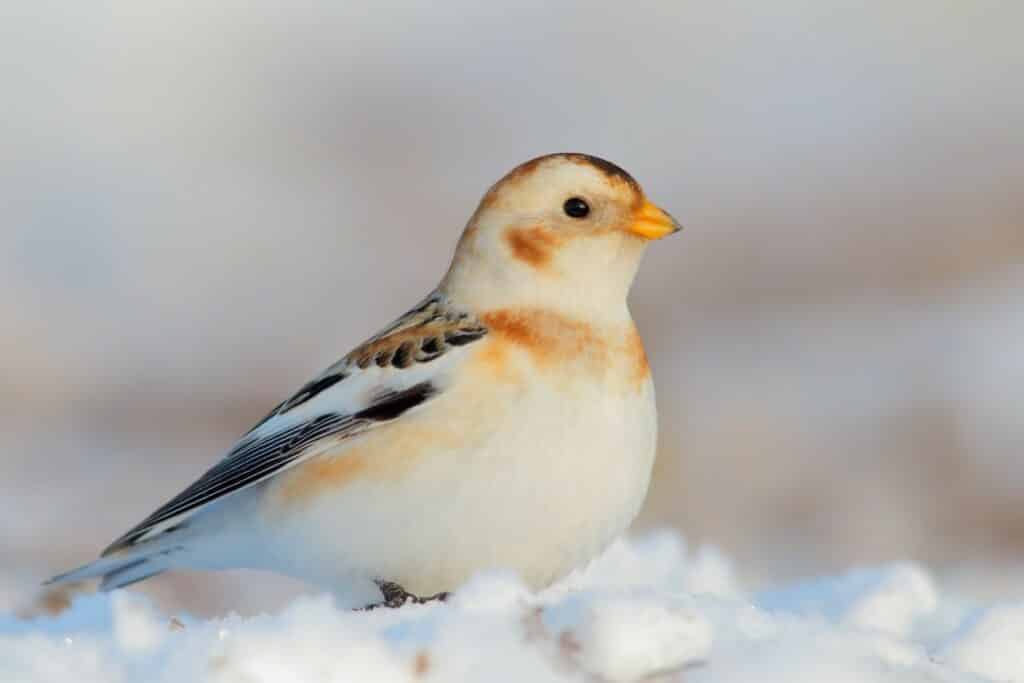The bunting bird, a delightful and diverse group of birds, adds a splash of colour and melody to the British avian tapestry. With their distinctive plumage and enchanting songs, these small birds hold a special place in the hearts of birdwatchers and nature enthusiasts. In this comprehensive article, we will explore the world of buntings, examining their biology, behaviour, historical significance, and their role in the modern British ecosystem.
Physical Characteristics and Variety
Buntings are a diverse group of passerine birds, and their physical characteristics vary widely among species. However, they generally share a few common features. Most buntings have stout, seed-cracking bills, well-suited for their granivorous diet. They often exhibit sexual dimorphism, with males and females differing in plumage, with males typically sporting more vibrant colours.
In Britain, several species of buntings have captured the attention of ornithologists and bird enthusiasts. Each species boasts unique traits and characteristics:
- Yellowhammer (Emberiza citrinella): The Yellowhammer is perhaps the most iconic bunting in Britain. Males display striking yellow plumage with reddish-brown streaks on the chest. Their distinctive song, often described as “a little bit of bread and no cheese,” echoes across farmland and open country.
- Cirl Bunting (Emberiza cirlus): The Cirl Bunting is known for its brilliant yellow-green plumage and a distinctive black bib-like patch on its throat. This species is primarily found in farmland with hedgerows and scattered trees.
- Reed Bunting (Emberiza schoeniclus): Reed Buntings are easily identifiable by their striking combination of black and white markings. They prefer wetland habitats, including reed beds and marshes, where they construct nests hidden among the dense vegetation.
- Corn Bunting (Emberiza calandra): The Corn Bunting is the largest bunting species in Britain and boasts a brownish plumage with streaks and a distinctive pale collar. They are often associated with agricultural landscapes, especially fields of cereal crops.
- Ortolan Bunting (Emberiza hortulana): The Ortolan Bunting is known for its intricate and beautiful plumage, with warm brown tones and fine streaking. It is a rare summer visitor to Britain, primarily found in the southeast.
- Snow Bunting (Plectrophenax nivalis): During the winter months, when they make their way to Britain, Snow Buntings can be spotted in coastal areas, especially along shorelines and sand dunes.
Each of these buntings adds its unique charm and character to the British avian scene, with distinct appearances and songs that make them a joy to observe and listen to.

Habitat and Range
Buntings in the UK can be found in a variety of habitats, from open farmlands to coastal marshes and reedbeds. Each species has its preferred habitat, but most are associated with open areas where they can forage for seeds and insects. The Cirl Bunting, for instance, is commonly found in farmland with hedgerows and scattered trees, while the Reed Bunting prefers wetland habitats such as reed beds and marshes.
The distribution of buntings in the UK varies depending on the species, but they are generally widespread throughout the country, with some regional variations in abundance.
Diet and Feeding Behaviour
Buntings are primarily granivorous, meaning their diet primarily consists of seeds. They are often seen foraging on the ground or in low vegetation, searching for seeds from grasses, wildflowers, and agricultural crops. In addition to seeds, they may also include insects in their diet, especially during the breeding season when protein-rich food is crucial for raising their young.
Their feeding behaviour is characterised by methodical seed-cracking techniques, using their robust bills to open seeds and extract the nutritious kernel. This skilful adaptation has allowed buntings to thrive in diverse habitats where seeds are abundant.

Breeding and Reproduction
Breeding season for buntings typically occurs from late spring to early summer. During this time, males sing to establish territory and attract females. The male’s song plays a vital role in courtship and is often a delightful melody that resonates across the chosen habitat.
Buntings construct cup-shaped nests, often hidden in dense vegetation or on the ground, depending on the species. The female typically lays a clutch of eggs, and both parents take turns incubating them. Once the eggs hatch, both parents share in the responsibility of feeding and caring for the nestlings until they fledge and become independent.
Conservation Status
The conservation status of buntings in Britain varies by species. Some, like the Cirl Bunting, have faced declines in the past due to habitat changes and agricultural practices. However, concerted conservation efforts, including habitat restoration and supplementary feeding programs, have helped stabilise and even increase their populations in certain areas.
For other species, like the Reed Bunting, their populations have remained relatively stable. Conservation initiatives continue to monitor their numbers and protect their critical wetland habitats.
Cultural and Historical Significance
Buntings have not held the same level of cultural and historical significance as some other bird species, but they have nonetheless played a role in traditional folklore and rural life. Their vibrant colours and distinctive songs have made them a subject of interest for rural communities and amateur ornithologists alike.
In some regions, their songs were once believed to predict the weather or foretell omens. Such folklore highlights the close relationship between humans and nature, where birds like buntings were intimately connected to the rhythms of the seasons.

Buntings in Modern Britain
In modern Britain, buntings continue to enchant birdwatchers and nature enthusiasts. Their presence is a reminder of the diverse birdlife that graces the British Isles. Observing buntings in their natural habitats offers a glimpse into the intricate web of life that sustains our ecosystems.
These charming birds also serve as indicators of habitat health. By monitoring buntings and their populations, conservationists gain valuable insights into the state of grasslands, farmlands, and wetlands, helping guide efforts to protect these important environments.
Challenges and Future Prospects
The challenges faced by buntings in Britain are often linked to habitat loss and changes in land use. Agricultural intensification, habitat fragmentation, and urbanisation have all contributed to habitat degradation for these birds. Conservation efforts must focus on preserving and restoring suitable habitats, especially in farmland and wetland areas.
Additionally, climate change poses a growing threat, affecting both the availability of suitable habitat and the timing of food resources. Monitoring and research are essential to understanding how buntings will respond to these environmental changes and to develop effective conservation strategies.
Conclusion
Buntings, with their captivating songs and vibrant plumage, enrich the British avian landscape. These small birds have a quiet charm that belies their significance in the broader context of biodiversity and habitat health. As we appreciate their beauty and celebrate their presence, let us also commit to safeguarding the habitats they rely on and ensuring that future generations can share in the joy of encountering buntings in the British countryside.
Sam loves to learn about animals and their habitats. He has been a nature lover from a very young age, and has been writing papers and articles about wildlife for as long as he can remember.
